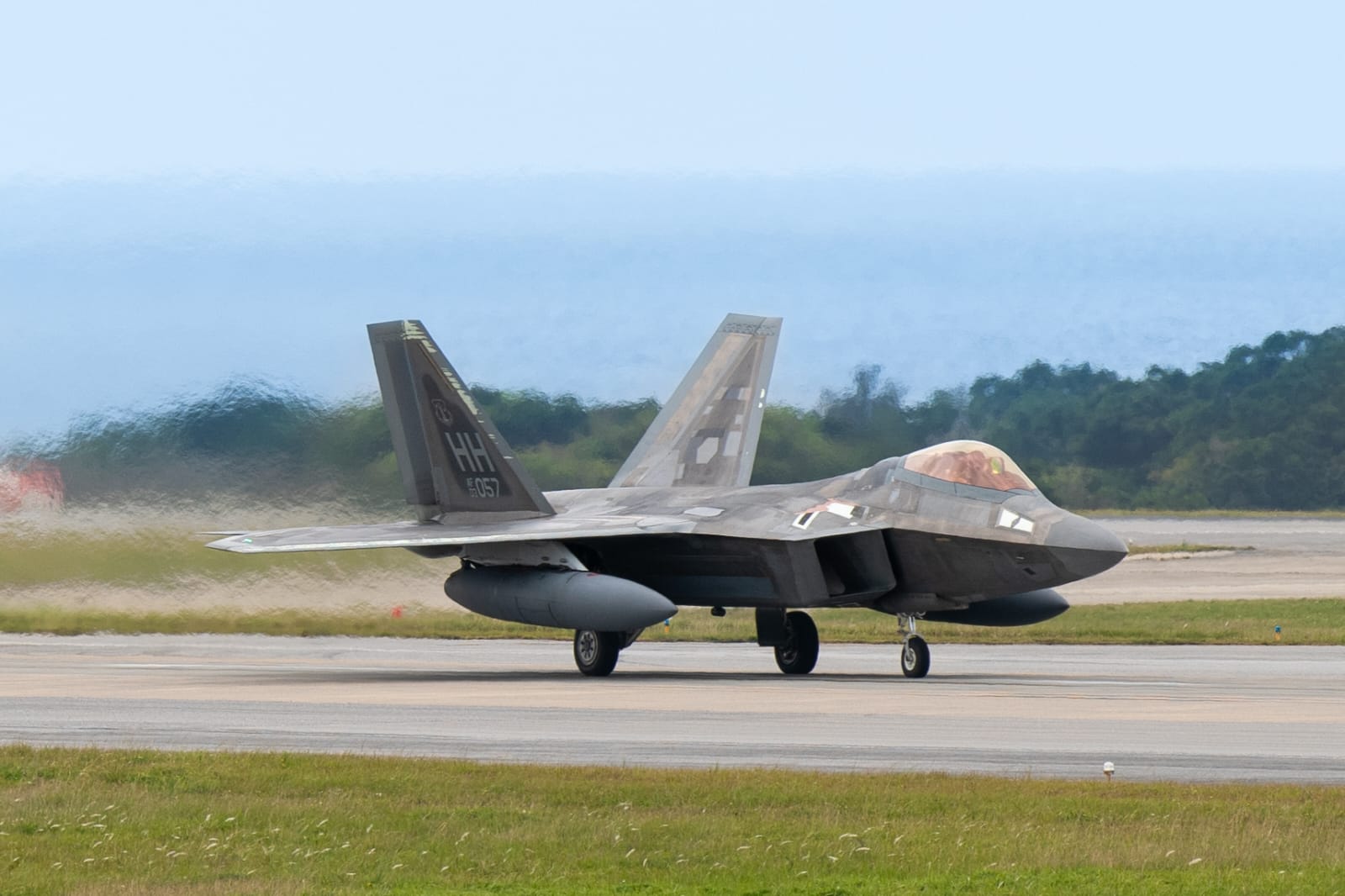One of the US Air Force’s (USAF) F-22 Raptors encountered another incident on May 6. While the “mishap” is under investigation, it is yet another accident with the aircraft that does not augur well for its reputation.
The incident occurred at the Savannah/Hilton Head International Airport in Georgia during an Air National Guard fighter exercise on May 6, as reported by the 165th Airlift Wing, which is home to Savannah Sentry, a counter-air drill for fourth- and fifth-generation fighter aircraft of the Air National Guard.
In a press release, the 165th Airlift Wing announced that although one pilot was involved in the incident, “no injuries were sustained.” However, it wasn’t immediately clear if the incident happened on the ground or if there was an emergency during the flight.
“Thank you to all the first responders who arrived on the scene,” Col. Stephen Thomas, commander of the Air Dominance Center at Savannah Air National Guard Base, Georgia, said in a statement. “Sentry Savannah is all about showcasing readiness, and today’s mishap affirmed our airmen’s ability to respond at a moment’s notice.”
The photographs of the Raptor turned over on its side have since appeared on social media, with several pro-Russian and pro-Chinese military bloggers mocking the aircraft and posing questions about the capability of the stealth fighter that has been involved in multiple non-combat accidents in the last couple of years.
An image posted to r/aviation on Reddit shows a mishap has occurred with an F-22 at Savannah IAP in Georgia. pic.twitter.com/Ind125Jjbw
— TheIntelFrog (@TheIntelFrog) May 6, 2024
The recent mishap is the second to have happened to a Raptor in as many months. Last month, a USAF F-22 Raptor grounded on its nose at Kadena Air Base in Okinawa, Japan, following a nose gear malfunction. The aircraft reportedly suffered an emergency on the runway, and photos showed the stealth aircraft being towed with its collapsed nose gear.
The aircraft had recently been deployed to Japan, one of the strategic USAF deployments in the world. This F-22 likely belonged to one of the two F-22 Raptor squadrons recently dispatched to Okinawa by the US Air Force, replacing retired F-15 Eagles.
U.S. Air Force F-22 Raptor fighter jet suffered a nose gear issue at Kadena Air Base, Okinawa, Japan.
Images show the stealth aircraft being towed with its nose gear apparently retracted. pic.twitter.com/mteqppfelQ
— Clash Report (@clashreport) April 12, 2024
The Raptor — one the most expensive warplanes in the US arsenal — is a single-seat supersonic fighter that entered service in 2005. Regarded as the world’s finest stealth air superiority fighter, it is reportedly capable of sneaking into enemy territory undetected.
While the Raptor remains the most revered and classified combat aircraft program in the US, it has been marred by troubles. Last year in May, for example, a Raptor flew for the first time in five years after it suffered extensive damage from a botched takeoff on April 13, 2018.
According to a study of the Air Force Safety Center, statistics received by Air Force Times mentioned that the “F-22 Raptor fighter led manned aircraft in the Air Force’s most serious non-combat mishaps at nine accidents in fiscal year 2023.”
Several incidents have preceded the ones collated by EurAsian Times (see this report).
It does not help that there are not many F-22 Raptors in the US inventory. Only 185 F-22s, meant to replace the F-15 Eagles, are currently in the Air Force’s inventory. The number of combat-capable jets may be lower.
The service is already looking to downsize the Raptor fleet by decommissioning 32 old Block 20 F-22 Raptors, which have been guzzling vast amounts of money in maintenance.
The Raptors are expected to be replaced with the NGAD (the Next Generation Air Dominance, a USAF sixth-generation air superiority initiative.
The Raptors, however, are believed to be the best bet for the USAF in case of a potential conflict with China, the threat of which is never put off the table, especially with the burgeoning threat from Beijing to US allies like Taiwan and the Philippines.
US Banks On F-22s
While the USAF has many F-35 Lightning IIs, which are also fifth-generation stealth combat aircraft, the Raptor is considered ‘indispensable.’
The F-22 is a super-maneuverable fighter due to two-dimensional thrust vectoring capabilities and high thrust-to-weight ratio. Its powerful communication capabilities give its pilots an overall sense of situational awareness.
The F-22 has three internal armament bays and can carry air-to-ground and air-to-air missiles in addition to smart and dumb bombs. Due to its internal armament capability, the Raptor can dominate combat without compromising stealth in non-permissive environments.
The USAF recently concluded a seven-day exercise operating the F-22 Raptors and aircraft from austere, basic airfields in the western Pacific’s Guam and Mariana Islands. Raptors from Joint Base Elmendorf-Richardson (JBER) Alaska and Joint Base Pearl Harbor-Hickam (JBPHH) Hawaii flew across the Pacific for the exercise.

18 Wing Public Affairs/US Air Force.
This was a component of the Agile Combat Employment (ACE) concept, in which fighter jets may operate from scattered sites without fully supported infrastructure.
Chinese military innovations have frequently been juxtaposed against the F-22’s capabilities. These have included claims to develop advanced quantum radar systems and ground-to-air hypersonic missiles specifically intended to defeat the F-22s.
This gives an idea, even if sketchy, of the F-22 Raptor’s significance in a potential combat with China. This is also why the frequent accidents involving the aircraft don’t bode well for the United States Air Force.
- Contact the author at sakshi.tiwari9555 (at) gmail.com
- Follow EurAsian Times on Google News




